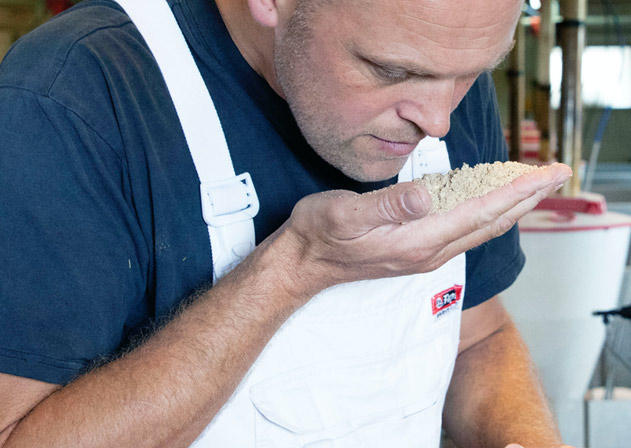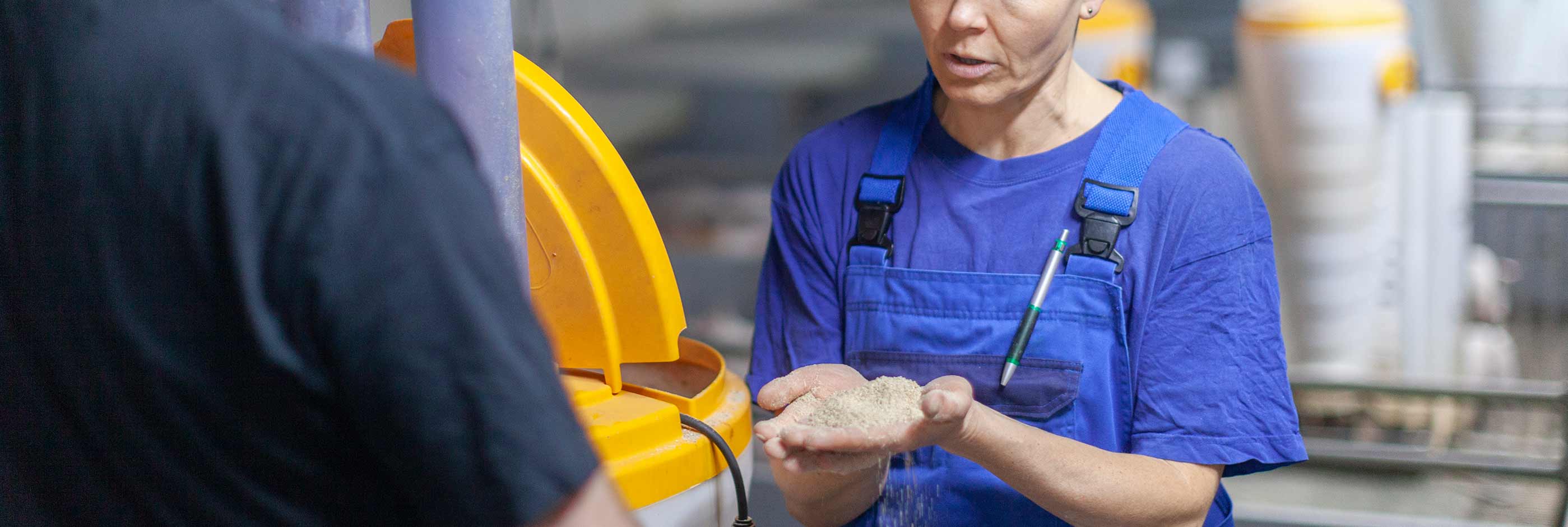New protein source improved daily weight gain of 80,000 piglets by 50 grams
Case HP 800 Booster: Before changing to HP 800 Booster, the piglets at Risgaard Pig Production in Denmark only had a daily weight gain of 450 grams. They also had diarrhea when going from diet 1 to diet 2.
By Morten Thomsen. Published in Magasinet SVIN, Landbrugsmedierne, Denmark
Piglet diarrhea had bothered Farm Manager Martin Holch Andersen and the weaning unit staff for a long time. They were also not satisfied with the daily weight gain level around 450 grams.
The weaning diet worked fine, but when shifting to the next diet diarrhea almost always occurred.
“It was often worse when we had a new load of soybean meal,” the Manager remembers. Therefore, he initially drew attention to the protein content of the soybean meal, which, he suspected, was too high. But the analysis showed that the content was too low rather than too high. But, the content of ANF (anti-nutritional factors) was on the high side.
Together with Peter Mark Nielsen from Himmerlands Grovvarer, Anders Hagemann from Hamlet Protein visited the farm. They suggested some changes in the feed which turned out to point in the right direction.
First, they wanted to replace 3% blood plasma in the weaning diet with
8% HP 800 Booster, which consists of 90 % HP 300 and 10% yeast. Blood plasma contains 82% protein versus 55% in HP 800 Booster. Next, the content of fish meal was reduced from 8 to 4%.
“These changes in fact meant, that feed costs were lowered by 5 DKK (0.67 EUR) per produced piglet, even though that was not the aim to begin with”, says Peter Mark Nielsen.
But, more importantly, the changes largely meant a goodbye to the diarrhea that occurred around the shift from diet 1 to diet 2. “We changed the weaning feed in June, and we have virtually not seen diarrhea since”, says Martin Holch Andersen, who himself is surprised that such relatively small changes have had such a significant effect in the barn.
The change in feed has also meant a change in the growth level. Before, 460 grams was normal, but now it has moved to over 500 grams. Last count even showed 530 grams, even though the weaning unit had more piglets than usual due to slow sales of piglets. "The change in feed has also meant lower drug consumption and a faster transition to diet 2" he says.
The two things, together with the feed change, mean that the savings reach 8 DKK (1.07 EUR) per piglet. During the same period, zinc is lowered to 2 kg per ton. Although there are about 10,000 pen places for piglets, there are only two feed strings. The Farm Manager would like to change that. »There is about 5 DKK (0.67 EUR) in savings per pig by having 3 rather than 2 diets,”notes Peter Mark Nielsen.
Mortality in the SPF (Specific Pathogene Free) herd is at 3 percent to the high side. The main cause being hernia.
“We are putting new heating plates in the farrowing pens, which can provide more heat than the old ones. Better conditions in the farrowing pen reduces the incidence of hernia in the weaning unit,” says Martin Holch Andersen. He is a little wary of blaming hernia on breeding conditions alone.
Also in the sow feed
The good experience with HP 800 Booster for weaning piglets made the staff add it to the nursing feed as well. “The nursery has not run well for a while. Without much effect, we had tried different products to increase the quantity of lactic acids in the feed. But 4.5% HP 800 Booster to the sows 5 days before to 5 days after has made a difference,” he says. The second nursing diet contains 2% HP 800 Booster. At the same time, whey is removed from the feed. The changes have meant that the staff no longer needs to clean the liquid feed tank several times a week.
About the farm:
Owner: Carsten Jensen, Skals, Denmark
Farm Manager: Martin Holch Andersen
2,000 sows
80,000 piglets
10,000 finishers
Feed for all animals: home mixed on farm
Swine Events
We share our knowledge at conferences and seminars around the world. See where to find us next and who you can meet.
You can also find presentations, videos and other material from previous events.

Product benefits
Feed is the critical factor in animal production, accounting for up to 70% of total costs. Using HAMLET PROTEIN specialty proteins in young animal feed, you can optimize feed efficiency – and maximize your return on investment.
The key is their easy absorption by immature guts. Although added to feed for only a limited period in early life, our proteins have a strong carry-over effect on animal growth and performance. Feeding trials have documented a higher slaughter weight compared to animals fed standard soybean meal.


